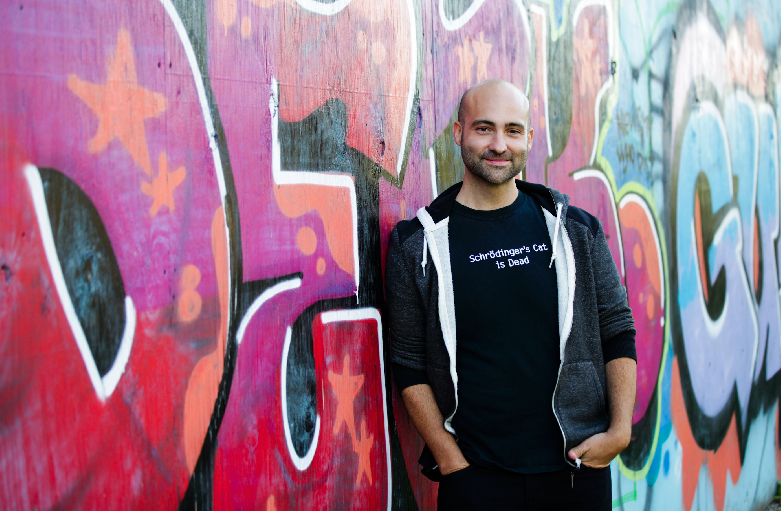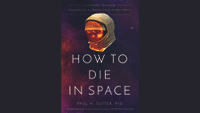'How to Die in Space' explores the dangers of astrophysics
"The universe may be beautiful, but it's actually very, very dangerous."

Life on Earth can seem pretty hazardous, but if you ask astrophysicist Paul Sutter, it's still safer than anywhere else in the universe.
Sutter, a frequent Space.com contributor, explores all the dangers the universe has on offer in his new book, "How to Die in Space: A Journey Through Dangerous Astrophysical Phenomena" (Pegasus Books, 2020).
From solar flares to wormholes, black holes to dark matter and supernovas to hostile aliens, Sutter touches on a host of astrophysical threats, both known and theoretical. (Read an excerpt from "How to Die in Space.") Sutter sat down with Space.com to share some highlights from writing the book. This interview has been edited for length and clarity.
Related: Best space and sci-fi books for 2020
How to Die in Space: A Journey Through Dangerous Astrophysical Phenomena
Pegasus Books, 2020 | $27.95 on Amazon
Join Paul Sutter in a brilliant and breathtakingly vivid tour of the universe, describing the physics of the dangerous, the deadly, and the scary in the cosmos.
Space.com: How did this book come about?
Paul Sutter: I wanted to write this book because I wanted to talk about some really cool astrophysics like stars blowing up, and stars being born and exotic stuff from the earliest moments of the formation of the universe. But as I was writing, as I was researching, I realized that, wow, this is all pretty high-energy stuff. It's all pretty nasty.
As cool as it is, I would hate to actually visit it, because there's a good chance I would die. And that became the genesis for the thread for the entire book: that the universe may be beautiful, but it's actually very, very dangerous.
Get the Space.com Newsletter
Breaking space news, the latest updates on rocket launches, skywatching events and more!
Space.com: How did you decide which topics to include in the book?
Sutter: I knew from the start that I wanted to take a kitchen-sink approach to this, where I wanted to touch on as many different topics as possible because it's an amazing universe out there and there's a lot going on.
Each one of the topics I could dig down and write an entire book on, but I did want to make it high-level, I wanted to include a lot of things and show the connections between things, how certain kinds of forces and particles operate in very, very different ways and very similar ways throughout the universe to produce the amazing variety of dangers in the universe.
Space.com: What was your favorite topic to write about and why?
Sutter: Oh, picking a favorite topic is like picking a favorite kid, which you do, but you don't tell anyone about. It was really, really fun, I will admit, to write the chapter on wormholes and explain how wormholes don't actually work and they're a very, very bad idea, and generally should be avoided. It was also really fun to explore all the nuanced ways that stars die, and how each one is beautiful in its own way and tragic in its own way, and of course, dangerous in its own way.
video: <script src=“https://cdn.jwplayer.com/players/ZimHsd7b-6SDdZpbt.js”></script>
Space.com: Are there any topics you considered including that didn't make the cut?
Sutter: I think I managed to get everything in, even if something doesn't get its own chapter. When I ran across something cool, I worked it into some chapter. So at least there's some broad overview of everything.
Space.com: What do you hope readers take away from the book?
Sutter: I hope readers have a lot of fun, I hope readers learn a lot about the universe, and I hope readers stay at home.
Space.com: Can you expand on that?
Sutter: The very first chapter in the book starts with the vacuum of space and how it can immediately kill you in a very grotesque way, and it gets worse from there. So, I encourage everyone to enjoy our universe from a very safe distance.
Space.com: Are there any particularly fun tidbits you stumbled on while researching and writing the book?
Sutter: I've written about wormholes, I've talked about wormholes before but one of the reasons I really enjoyed writing that chapter is, as I read paper after paper on wormholes stretching back, from the 1970s until the present day, I was amazed at how hard physicists have been working to try to get wormholes to work and how nature just won't let us and you can see the frustration in the history of the articles and it was fun to share that frustration.

Space.com: And that's in the last section of the book, the one about speculative threats. Could you talk a bit about that section in general?
Sutter: That was a very fun section to write because so much of the book was known or largely known. Of course, we have questions about everything, we haven't figured out everything about how the universe works, but we generally know what powers say, a solar flare or a supernova. And then we get to the speculative threats.
If we were doing an intergalactic voyage, I felt compelled to talk about some of these things that we're not sure if they exist, we're not sure if they are going to be threats, we're not sure if you're going to encounter them. And so it gave me a chance, an opportunity to give a little bit more fun, to get a little bit more whimsical, to talk about aliens, to talk about cosmic strings, to talk about jumping into a wormhole and explore that this is real research, this is real science, but it is very hypothetical right now.
Space.com: What do you hope readers take away from that section?
Sutter: What I hope people get out of the speculative threats is to recognize and appreciate that we live in a very large, very old, very mysterious universe and that, yes, we've learned a lot in astrophysics and cosmology and astronomy. But we have a lot more still left to learn, and the universe is very much capable of surprising us.
Space.com: What are you excited about right now in space?
Sutter: As I state in the beginning of the book, anything that I write about could change in a moment's notice. I am personally very excited for the upcoming James Webb Space Telescope, which will launch one of these days, I guess, and will tell us a lot about the formation of stars and the formation of planets.
I'm very excited by exoplanet-hunting missions and the possibility of life outside the Earth. I'm very excited for things like LIGO and the continued detection of gravitational waves and getting more and more understanding about how black holes work and don't work and stretch the limits of known physics.
Basically, everything that's happening in astrophysics, I'm excited [for] in some form.
You can buy "How to Die in Space" on Amazon or Bookshop.org.
Email Meghan Bartels at mbartels@space.com or follow her on Twitter @meghanbartels. Follow us on Twitter @Spacedotcom and on Facebook.
Join our Space Forums to keep talking space on the latest missions, night sky and more! And if you have a news tip, correction or comment, let us know at: community@space.com.

Meghan is a senior writer at Space.com and has more than five years' experience as a science journalist based in New York City. She joined Space.com in July 2018, with previous writing published in outlets including Newsweek and Audubon. Meghan earned an MA in science journalism from New York University and a BA in classics from Georgetown University, and in her free time she enjoys reading and visiting museums. Follow her on Twitter at @meghanbartels.










